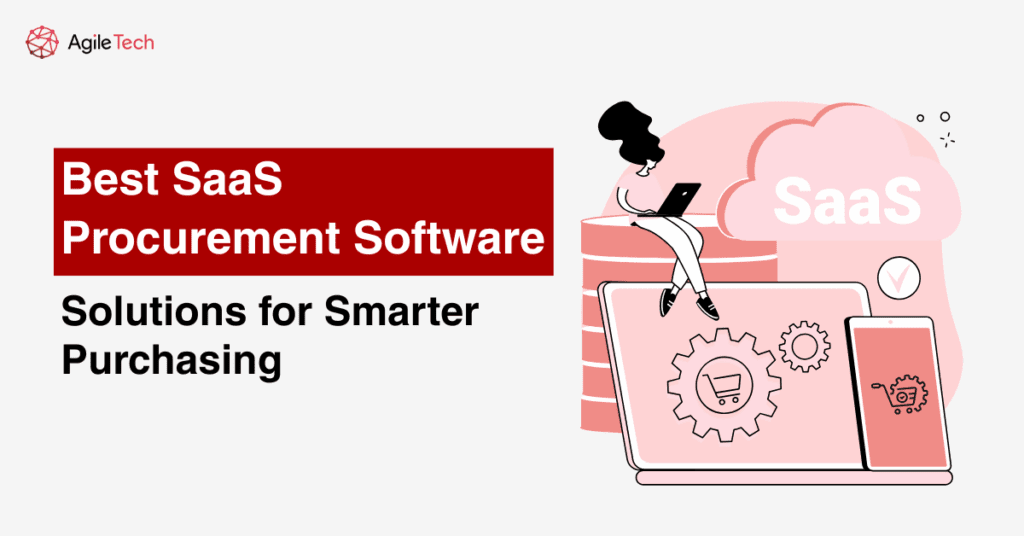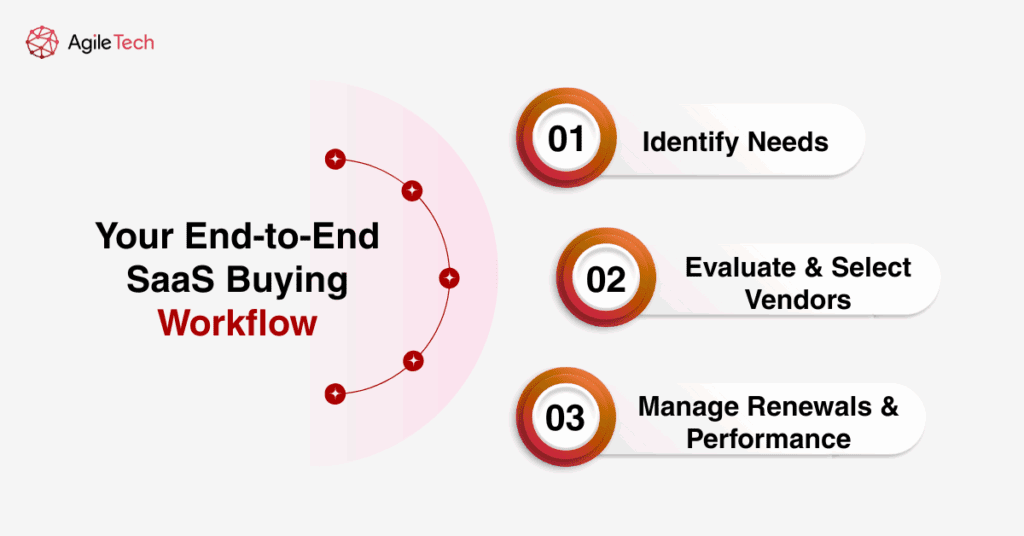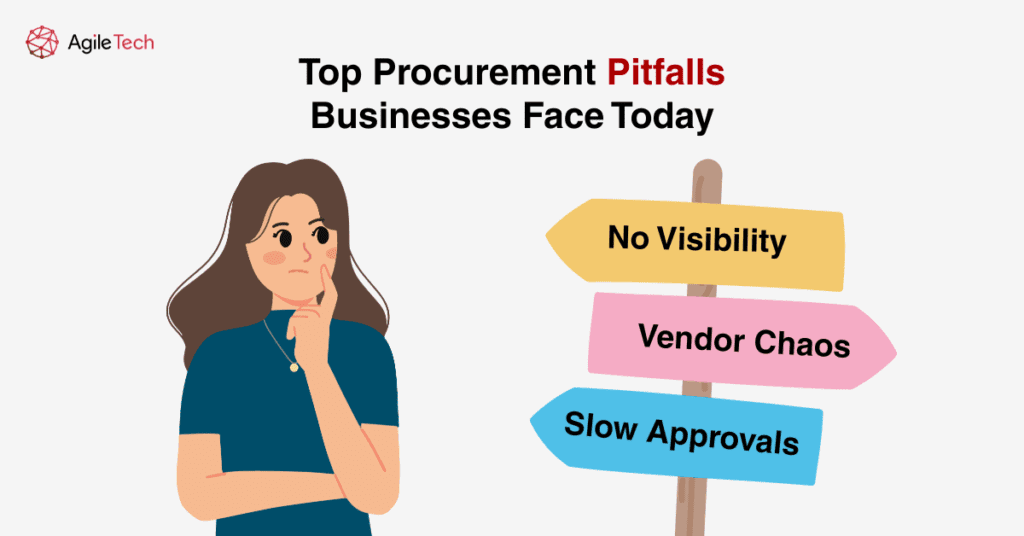Best SaaS Procurement Software Solutions for Smarter Purchasing
Managing software purchases across multiple teams or locations can quickly become chaotic without the right tools. This article explores how SaaS procurement software helps businesses take control of their software buying process through automation, visibility, and smarter vendor decisions. Whether you’re running a logistics network or a fast-growing restaurant chain, the right procurement system can reduce waste, save time, and scale with your operations.

1. What Is SaaS Procurement Software?
Understanding the foundations of SaaS procurement is the first step toward transforming how your organization manages software purchases. In this section, we’ll explain what SaaS procurement software is, why it’s important, and how it differs from traditional approaches.
1.1. Understanding SaaS Procurement
SaaS procurement software refers to digital platforms that help organizations manage the entire process of acquiring, managing, and renewing software-as-a-service (SaaS) tools. These platforms streamline tasks such as vendor evaluation, contract negotiation, budgeting, and compliance tracking. For large enterprises like restaurant chains or logistics companies, this type of solution enables more controlled and transparent software management. It reduces the manual workload associated with spreadsheets and helps standardize procurement practices across departments.
Think of SaaS procurement software as the modern equivalent of an experienced procurement officer who never sleeps, automating repetitive tasks, flagging potential risks, and helping you make smarter spending decisions in real-time.
1.2. Core Benefits for Modern Businesses
Businesses today rely heavily on a growing number of SaaS tools for operations, customer management, and inventory control. A well-implemented procurement SaaS solution reduces overspending, avoids duplicate subscriptions, and improves compliance with internal purchasing policies. It also offers valuable insights into usage patterns and vendor performance.
Imagine a restaurant group using separate accounting tools across different branches. A centralized procurement system not only tracks licenses but also compares how each branch uses the tool, providing management with concrete insights into productivity and ROI.
Furthermore, procurement platforms help organizations adhere to audit requirements by documenting every stage of the purchase process. This ensures better accountability and minimizes legal risk.
1.3. How It Differs from Traditional Procurement
Traditional procurement methods often involve lengthy paper-based workflows, manual approvals, and limited visibility into contract terms. SaaS procurement solutions centralize and automate these functions, improving speed and scalability. For example, a logistics company using spreadsheets may take 2–3 weeks to complete a full procurement cycle. With automation, the same cycle could be reduced to just a few days, freeing up time and reducing costly delays in operations.
Modern systems also offer predictive analytics that traditional methods lack. These insights help businesses anticipate future needs based on usage trends or seasonal fluctuations.
2. How the SaaS Procurement Process Works
From identifying internal needs to evaluating vendors and managing renewals, the SaaS procurement process includes multiple steps that determine whether a business gets real value from its software. This section outlines the core stages of the process and how businesses can approach them strategically.

2.1. Identifying Needs and Budgeting
This stage involves engaging with departments to understand pain points, growth plans, and gaps in current software stacks. For instance, if a logistics team manually schedules delivery routes, procurement teams may seek a SaaS tool with built-in GPS optimization. Similarly, a restaurant business noticing frequent food wastage might consider a procurement-integrated inventory tracker that aligns stock levels with sales trends.
Proper budgeting is not just about setting a ceiling. It includes forecasting SaaS consumption, estimating ROI, and calculating switching costs from current systems. Without such foresight, businesses risk overspending or adopting software that doesn’t scale.
Regular budget reviews and cross-functional input are essential. Involving team leads from operations, IT, and finance ensures the budget reflects actual needs rather than assumptions.
2.2. Evaluating and Selecting Vendors
SaaS procurement solutions help standardize vendor comparisons using scorecards and analytics. Consider this: Vendor A offers a cheaper monthly subscription, but Vendor B integrates seamlessly with your accounting system and provides 24/7 support. Factoring in these non-monetary criteria can lead to more sustainable, long-term software decisions.
In practice, businesses often use a weighted scoring system that evaluates vendors across 5–10 criteria, including price, features, support, security, and integration capabilities. This brings consistency and data to what was once a subjective decision.
Additionally, involving legal and compliance teams early helps reduce negotiation time and prevents missed obligations hidden in fine print.
2.3. Managing Renewals and Vendor Performance
Managing SaaS renewals can feel like playing whack-a-mole if not centralized. Key contracts may auto-renew without review, locking businesses into unfavorable terms. SaaS procurement platforms send automated alerts ahead of renewal dates, allowing decision-makers to assess whether the software is still needed, overused, or underused.
For example, a fast-growing logistics firm using 20+ SaaS platforms can leverage dashboard alerts to identify underutilized tools and either renegotiate pricing or eliminate waste. Performance tracking also ensures vendors are meeting their SLA promises.
Some platforms include built-in benchmarking tools, helping buyers compare current vendor performance to industry standards.
Read more: ERP Procurement Optimization: Breakthrough Solution for Transportation & Logistics Enterprises
3. Key Features of Procurement SaaS Solutions
What should you look for in a SaaS procurement platform? This section explores the features that differentiate a basic tool from a truly impactful system, from automation and real-time spend tracking to compliance control and system integrations.
3.1. Workflow Automation and Policy Control
Without workflow automation, approvals often get buried in email chains. A modern procurement SaaS solution automates multi-step approvals, routes requests based on value thresholds, and logs decisions for audit purposes.
Let’s say a restaurant manager submits a request to purchase a new POS system. With automation, the request flows through finance, IT, and procurement in a defined sequence no need for follow-up emails or missed deadlines.
Some tools offer visual workflow builders, allowing companies to adapt the system to their internal processes without coding.
3.2. Real-Time Spend Tracking
Procurement leaders benefit from seeing exactly where money is going in real time. Real-time spend tracking provides CFOs with actionable insights to avoid overbudgeting or underutilizing purchased tools.
For instance, if the marketing team purchased a $500/month tool used by only two team members, procurement can flag the inefficiency and recommend downsizing or reallocation. This visibility empowers more disciplined financial management.
Historical spend trends can also guide future budgeting and contract negotiations.
3.3. Integrations and Data Visibility
A key reason businesses avoid adopting new systems is the fear of poor integration. Leading procurement tools eliminate this barrier by connecting smoothly with ERP systems, CRMs, HRM platforms, and more.
A logistics company using SAP for operations can integrate procurement tools so that vendor data, delivery tracking, and budgeting stay synchronized. This prevents data silos and allows for comprehensive reporting.
APIs and webhooks enable real-time data synchronization, reducing reporting errors and manual work.
3.4. Compliance Management
SaaS procurement platforms enforce company policies through custom approval chains and document control. They also help ensure GDPR, SOC 2, and ISO compliance by requiring vendors to meet minimum standards before contracts are approved.
This is crucial for sectors like logistics that manage sensitive customer data or restaurant chains dealing with payment systems.
Audit trails are also automatically recorded, making it easier to prepare for internal or third-party audits.
Read more: ERP Procurement: Optimize ERP System Purchasing with Clear Steps & Roles
4. Common Challenges in the SaaS Procurement Process
Even with digital tools available, many businesses still struggle with SaaS procurement due to fragmented workflows, misaligned departments, or a lack of visibility. In this section, we’ll explore these challenges in depth and explain how to overcome them using modern procurement platforms.

4.1. Lack of Visibility into SaaS Spending
A 2024 Gartner study revealed that enterprises waste 20–30% of their SaaS budgets on tools they barely use. Without visibility, departments often purchase duplicate software, and no one tracks usage. SaaS procurement tools consolidate all subscriptions in one place, complete with license usage stats and contract terms. This provides a centralized, real-time dashboard that lets procurement teams quickly assess value, usage frequency, and renewal dates.
Centralized dashboards also help reduce shadow IT and bring rogue spending under control. When departments make ad-hoc purchases outside approved channels, costs spiral and compliance risks increase. With SaaS procurement software, businesses can flag such purchases and require justification or approvals before renewal.
4.2. Inefficient Approval and Onboarding Workflows
Slow procurement processes don’t just waste time; they delay operations and reduce competitiveness. A restaurant chain waiting weeks to approve an inventory software tool risks food spoilage, delayed reporting, or compliance issues. In logistics, delayed approvals could affect fleet optimization tools and disrupt delivery schedules.
Procurement tools offer drag-and-drop workflow builders and templates to simplify approvals and speed up onboarding. Some systems allow automated routing of requests to the right stakeholders based on amount, department, or contract type, removing bottlenecks and human error.
Faster onboarding also reduces downtime. Employees can begin using software almost immediately, helping teams move forward without costly delays or repeated follow-ups.
4.3. Vendor Management and Contract Complexity
Contracts are often buried in email threads or stored across multiple folders. As renewal deadlines approach, finding SLAs, terms, or clauses becomes a scavenger hunt. A procurement SaaS platform provides a searchable contract repository, version history, and expiration alerts. These features reduce the risk of auto-renewals or compliance violations.
For businesses dealing with dozens of software vendors, managing obligations and deliverables manually is inefficient. Modern procurement systems centralize documents and use metadata tagging to simplify legal and procurement reviews. Some even incorporate AI to identify red flags or suggest optimal renewal terms.
This centralization gives procurement teams more leverage when negotiating with vendors, backed by a full history of contract performance and usage data.
4.4. Misalignment Between Departments
When marketing, IT, and finance work in silos, procurement suffers. Without a shared system or common visibility, departments duplicate purchases or dispute budget ownership. SaaS procurement platforms address this by offering shared dashboards where each team can view license counts, renewal dates, approval status, and cost allocations.
In addition, built-in communication tools reduce the back-and-forth over email and improve coordination. Some platforms offer comment threads, notifications, or approval trails to ensure full transparency.
Weekly cross-department syncs supported by real-time dashboards help maintain alignment on procurement priorities and make long-term planning easier.
5. AgileTech’s Procurement Services in Transportation & Logistics
At AgileTech, we understand that no two businesses operate the same, especially in industries as complex and dynamic as logistics and food service. That’s why we don’t offer one-size-fits-all solutions. Instead, we develop custom procurement software designed around the specific challenges and workflows of your organization.
For transportation and logistics enterprises, our platforms integrate seamlessly with existing fleet systems, enabling smarter vendor tracking, depot-level budget control, and automated renewal cycles. Imagine managing software subscriptions for multiple regions, vendors, and warehouse hubs all from a centralized, intuitive dashboard.
For large-scale restaurant chains, we help unify procurement with inventory management and supplier coordination. Our systems ensure consistent purchasing policies across outlets, streamline multi-tier approval processes, and sync in real-time with POS and accounting platforms. This alignment helps reduce food waste, avoid stockouts, and ensure supplier accountability.
What makes AgileTech different is our commitment to flexibility and long-term value. You’re not adapting to our tool; we’re building it to fit your operations. We provide end-to-end services, from discovery workshops and prototyping to post-launch support and iterative enhancements.
Whether you’re looking to centralize software purchases, improve spend transparency, or modernize vendor collaboration, AgileTech’s procurement solutions empower you with the tools to act faster, spend smarter, and scale confidently.
Conclusion
In today’s fast-moving business environment, manual procurement is no longer viable. Whether you run a multi-location restaurant or manage logistics across regions, a centralized SaaS procurement system is the key to growth and efficiency.
With platforms like AgileTech’s tailored solutions, companies can streamline procurement workflows, reduce waste, and gain full visibility into their software investments.
Your business deserves more than generic software; it needs a partner that understands your operations and scales with your ambitions. AgileTech delivers just that.